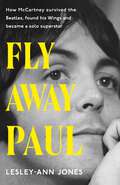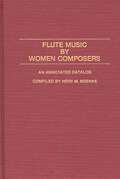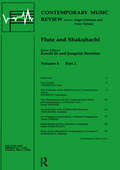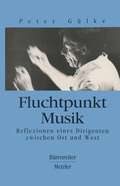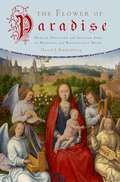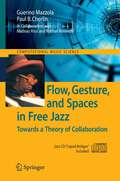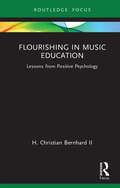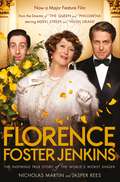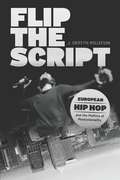- Table View
- List View
Flying Burrito Brothers' The Gilded Palace of Sin (33 1/3)
by Bob ProehlIn 1968, the Flying Burrito Brothers released The Gilded Palace of Sin on A&M Records,selling a disappointing 400,000 copies. Almost forty years later, front man Gram Parsons, is still spoken of with almost messianic reverence. Patron saint of alt-country, emblazoned with a shining cross, dead at 26. Overshadowed by Parsons, this album remains an anomaly in the country rock genre, a map in miniature of a moment in music, and warrants discussion as more than part of the Gram Parsons legacy.
Fly Away Paul: The extraordinary story of how Paul McCartney survived the Beatles and found his Wings
by Lesley-Ann JonesPre-order the remarkable account of Paul McCartney's time in Wings and ascent into solo stardom, by renowned music biographer Lesley-Ann JonesNo comprehensive biography of the time Paul McCartney spent with Wings has ever been published, until now.A period often dismissed as McCartney's 'missing' years, in fact the band lasted for a decade: two years longer than the Beatles, and wielded such impact and influence that they at one point achieved the status as the biggest live band in the world. Band on the Run sold over 6 million copies worldwide and became EMI's biggest selling album of the 1970s in the UK. Music biographer Lesley-Ann Jones has met McCartney many times and knew his late wife Linda. Here she shows how crucial Linda was to the evolution of Wings - at great cost to herself given the ridicule she was to encounter. But Linda saw that McCartney needed the band in the wake of the break up of the Beatles. Drawing on extensive interviews and her trademark meticulous research, the author shows how this period in Paul McCartney's career was to become crucial not only to his development as an artist, but to his very survival.
Flute Music by Women Composers: An Annotated Catalog (Music Reference Collection)
by H Alais BoenkeFor the flutist wishing to perform music composed by women, this annotated catalog will come as a most welcome addition to the numerous flute bibliographies now available. Boenke has spent four years gleaning all possible sources to come up with several hundred listings of composers from three centuries and 40 different countries. When the information is available, she lists publisher and the OCLC system record number after the routinely listed title and instrumentation. In addition to the alphabetical listing are indexes for instrumentation, title, publisher, and composer. A short list of sources is heavy on LC and NUC catalogs as well as the several standard sources on women in music. This volume could serve as an example for instrument-specific music bibliographies. For flutists it is priceless. ChoiceThis book, an alphabetical listing of flute music by women composers, provides ready access to flute music that is published or available in manuscript form. Unlike any previous handbook of the flute repertoire, it is devoted entirely to the works of women, the vast majority of whom are not mentioned in the standard catalogs of flute literature. A carefully compiled study, the volume examines the quantity, variety, and scope of women's work in this genre and includes composers from more than forty countries, spanning three centuries. It contains works for solo flute, duets, flute and piano, concertos, woodwind quintets, other chamber ensembles, or any work that employs soloistic use of the flute. It also provides biographical information on the composers, publishers, availability of works, and annotations on the works themselves. All compositions are indexed by title and by instrumentation, and publishers and contemporary composers are listed with current addresses, to facilitate the ordering of music.The first published volume of its kind, this unusual work will draw attention to valuable and unknown repertoire in this genre and provide the opportunity for women's works to be heard more often. It will be useful in all university music libraries and conservatories, and it will be a valuable resource for professional flutists, teachers of flute, and researcher in women's studies.
Flute For Dummies
by Karen Evans MoratzAn excellent primer for those with little or no experience playing the flute Always wanted to play the flute? Are you a former flautist who wants to refresh your skills? Flute For Dummies is the guide for you. Following along with the book's accompanying CD, you will learn the nuances of playing the flute as an accompanying instrument or for playing a solo, in a variety of musical styles. Readers will learn how to play, step-by-step – from the correct angle for blowing into the mouthpiece and controlling pitch, to proper breathing, creating vibrato, and much more The book's accompany CD allows readers to play what they are learning, and listen to the accompanying track to see if they're getting it right Karen Moratz is Principal Flutist with the Indianapolis Symphony Orchestra and Artist in Residence and Adjunct Professor of Flute at the School of Music/Jordan College of Fine Arts at Butler University Easy-to-understand methods and instructions make learning to play this beautiful instrument as simple and straightforward as possible!
Flute Exam Pieces from 2023 Initial
by VariousPlease note: MP3 audio files exist on RNIB Bookshare that accompany this title. Please email bookshare@rnib.bookshare to request them quoting the ISBN number 9781800518735.
The Flute Book: A Complete Guide for Students and Performers (Oxford Musical Instrument Series)
by Nancy ToffTeachers and flutists at all levels have praised Nancy Toff'sThe Flute Book, a unique one-stop guide to the flute and its music. Organized into four main parts--The Instrument, Performance, The Music, and Repertoire Catalog--the book begins with a description of the instrument and its making, offers information on choosing and caring for a flute, sketches a history of the flute, and discusses differences between members of the flute family. In the Performance section, readers learn about breathing, tone, vibrato, articulation, technique, style, performing, and recording. In the extensive analysis of flute literature that follows, Toff places individual pieces in historical context. The book ends with a comprehensive catalog of solo and chamber repertoire, and includes appendices with fingering charts as well as lists of current flute manufacturers, repair shops, sources for flute music and books, and flute clubs and related organizations worldwide. In this Third Edition, Toff has updated the book to reflect technology's advancements--like new digital recording technology and recordings' more prevalent online availability--over the last decade. She has also accounted for new scholarship on baroque literature; recent developments such as the contrabass flute, quarter-tone flute, and various manufacturing refinements and experiments; consumers' purchase prices for flutes; and a thoroughly updated repertoire catalog and appendices.
The Flute Book: A Complete Guide for Students and Performers (Oxford Musical Instrument Series)
by Nancy ToffTeachers and flutists at all levels have praised Nancy Toff'sThe Flute Book, a unique one-stop guide to the flute and its music. Organized into four main parts--The Instrument, Performance, The Music, and Repertoire Catalog--the book begins with a description of the instrument and its making, offers information on choosing and caring for a flute, sketches a history of the flute, and discusses differences between members of the flute family. In the Performance section, readers learn about breathing, tone, vibrato, articulation, technique, style, performing, and recording. In the extensive analysis of flute literature that follows, Toff places individual pieces in historical context. The book ends with a comprehensive catalog of solo and chamber repertoire, and includes appendices with fingering charts as well as lists of current flute manufacturers, repair shops, sources for flute music and books, and flute clubs and related organizations worldwide. In this Third Edition, Toff has updated the book to reflect technology's advancements--like new digital recording technology and recordings' more prevalent online availability--over the last decade. She has also accounted for new scholarship on baroque literature; recent developments such as the contrabass flute, quarter-tone flute, and various manufacturing refinements and experiments; consumers' purchase prices for flutes; and a thoroughly updated repertoire catalog and appendices.
Flute and Shakuhachi (Contemporary Music Review)
by Kondō Jō Joaquim BernítezFirst Published in 1994. In their quest for new sound materials, avant-garde musicians often produce sounds which accidentally bear a strong resemblance to traditional instruments. While conventional Western instruments have taken on a functional role, instruments such as the shakuhachi are still closely associated with their cultural, religious, and historical roots. The colorful and unique shakuhachi has become the most widely known and used Japanese instrument. This collection provides a comprehensive historical overview of the shakuhachi, its technical aspects and its relationship to the flute.
Flute and Shakuhachi (Contemporary Music Review)
by Jo Kondo J BenitezFirst Published in 1994. In their quest for new sound materials, avant-garde musicians often produce sounds which accidentally bear a strong resemblance to traditional instruments. While conventional Western instruments have taken on a functional role, instruments such as the shakuhachi are still closely associated with their cultural, religious, and historical roots. The colorful and unique shakuhachi has become the most widely known and used Japanese instrument. This collection provides a comprehensive historical overview of the shakuhachi, its technical aspects and its relationship to the flute.
Flute, Accordion or Clarinet?: Using the Characteristics of Our Instruments in Music Therapy
by Amelia Oldfield Jo Tomlinson Dawn LoombeMusic therapists are trained to use their first study instrument in clinical practice, yet existing literature focuses almost exclusively on the use of piano, basic percussion and voice.This illuminating book brings together international music therapists who use a diverse range of musical instruments in their clinical work: the clarinet, the piano accordion, the flute, the cello, the trumpet and flugelhorn, the bassoon, the violin, the viola, the harp, the guitar, lower brass instruments (the trombone and the euphonium), the oboe, the saxophone and bass instruments (double bass and bass guitar). Each therapist reflects on their relationship with their instrument and the ways in which they use it in therapeutic settings, discussing its advantages and disadvantages in a variety of clinical populations: children and adolescents, adults with learning disabilities, adults with mental health problems and older people.This will be essential reading for any music therapist or student music therapist who uses or is interested in using a musical instrument in their work, and will be of interest to other caring and healthcare professionals, teachers, musicians and carers wanting to learn more about instrumental music therapy.
Fluchtpunkt Musik: Reflexionen eines Dirigenten zwischen Ost und West
by Peter GülkeReflexionen eines Dirigenten zwischen Ost und West.
Flowing Tides: History and Memory in an Irish Soundscape
by Gearóid Ó hAllmhuráinDespite its isolation on the western edge of Europe, Ireland occupies vast amounts of space on the music maps of the world. Although deeply rooted in time and place, Irish songs, dances and instrumental traditions have a history of global travel that span the centuries. Whether carried by exiles, or distributed by commercial networks, Irish traditional music is one of the most popular World Music genres, while Clare, on Ireland's Atlantic seaboard, enjoys unrivaled status as a "Home of the Music," a mecca for tourists and aficionados eager to enjoy the authentic sounds of Ireland. For the first time, this remarkable soundscape is explored by an insider-a fourth generation Clare concertina player, uilleann piper and an internationally recognized authority on Irish traditional music. Entrusted with the testimonies, tune lore, and historic field recordings of Clare performers, Gearóid Ó hAllmhuráin reveals why this ancient place is a site of musical pilgrimage and how it absorbed the impact of global cultural flows for centuries. These flows brought musical change inwards, while simultaneously facilitating outflows of musical change to the world beyond - in more recent times, through the music of Clare stars like Martin Hayes and the Kilfenora Céilí Band. Placing the testimony of music and music makers at the center of Irish cultural history and working from a palette of disciplines, Flowing Tides explores an Irish soundscape undergoing radical change in the period from the Napoleonic Wars to the Great Famine, from the birth of the nation state to the meteoric rise-and fall-of the Celtic Tiger. It is essential reading for all interested in Irish/Celtic music and culture.
Flowing Tides: History and Memory in an Irish Soundscape
by Gearóid Ó hAllmhuráinDespite its isolation on the western edge of Europe, Ireland occupies vast amounts of space on the music maps of the world. Although deeply rooted in time and place, Irish songs, dances and instrumental traditions have a history of global travel that span the centuries. Whether carried by exiles, or distributed by commercial networks, Irish traditional music is one of the most popular World Music genres, while Clare, on Ireland's Atlantic seaboard, enjoys unrivaled status as a "Home of the Music," a mecca for tourists and aficionados eager to enjoy the authentic sounds of Ireland. For the first time, this remarkable soundscape is explored by an insider-a fourth generation Clare concertina player, uilleann piper and an internationally recognized authority on Irish traditional music. Entrusted with the testimonies, tune lore, and historic field recordings of Clare performers, Gearóid Ó hAllmhuráin reveals why this ancient place is a site of musical pilgrimage and how it absorbed the impact of global cultural flows for centuries. These flows brought musical change inwards, while simultaneously facilitating outflows of musical change to the world beyond - in more recent times, through the music of Clare stars like Martin Hayes and the Kilfenora Céilí Band. Placing the testimony of music and music makers at the center of Irish cultural history and working from a palette of disciplines, Flowing Tides explores an Irish soundscape undergoing radical change in the period from the Napoleonic Wars to the Great Famine, from the birth of the nation state to the meteoric rise-and fall-of the Celtic Tiger. It is essential reading for all interested in Irish/Celtic music and culture.
The Flower of Paradise: Marian Devotion and Secular Song in Medieval and Renaissance Music
by David J. RothenbergThere is a striking similarity between Marian devotional songs and secular love songs of the late Middle Ages and Renaissance. Two disparate genres--one sacred, the other secular; one Latin, the other vernacular--both praise an idealized, impossibly virtuous woman. Each does so through highly stylized derivations of traditional medieval song forms--Marian prayer derived from earlier Gregorian chant, and love songs and lyrics from medieval courtly song. Yet despite their obvious similarities, the two musical and poetic traditions have rarely been studied together. Author David J. Rothenberg takes on this task with remarkable success, producing a useful and broad introduction to Marian music and liturgy, and then coupling that with an incisive comparative analysis of these devotional forms and the words and music of secular love songs of the period. The Flower of Paradise examines the interplay of Marian devotional and secular poetics within polyphonic music from ca. 1200 to ca. 1500. Through case studies of works that demonstrate a specific symbolic resonance between Marian devotion and secular song, the book illustrates the distinctive ethos of this period in European culture. Rothenberg makes use of an impressive command of liturgical and religious studies, literature and poetry, and art history to craft a study with wide application across disciplinary boundaries. With its broad scope and unique, incisive analysis, this book will open up new ways of thinking about the history and development of secular and sacred music and the Marian tradition for scholars, students, and anyone with an interest in medieval and Renaissance religious culture.
Flow, Gesture, and Spaces in Free Jazz: Towards a Theory of Collaboration (Computational Music Science)
by Guerino Mazzola Paul B. CherlinFlow: The Rhythmic Voice in Rap Music (Oxford Studies in Music Theory)
by Mitchell OhrinerFrom its dynamic start at dance parties in the South Bronx in the late 1970s, hip hop and rap music have exploded into a dominant style of popular music in the United States and a force for activism and expression all over the world. So, too, has scholarship on hip hop and rap music grown. Yet much of this scholarship, employing methods drawn from sociology and literature, leaves unaddressed the expressive musical choices made by hip hop artists. Fundamental among these choices is the rhythm of the rapping voice, termed "flow." Flow presents unique theoretical and analytical challenges. It is rhythmic in the same way other music is rhythmic, but also in the way speech and poetry are rhythmic. For the first time, Mitchell Ohriner's Flow: The Rhythmic Voice in Rap Music reconciles approaches to key concepts of rhythm, such as meter, periodicity, patterning, and accent, treated independently across other branches of scholarship. Ohriner theorizes flow by weaving between the methods of computational music analysis and humanistic close reading. Through the analysis of large collections of verses and individual tracks, the book addresses theories of rhythm, meter, and groove in the unique ecology of rap music. In a series of case studies in the second half, the work of Eminem clarifies how flow can relate to text, the work of Black Thought of The Roots clarifies how flow can relate to other instrumental streams, and the work of Talib Kweli clarifies how flow can relate to rap's persistent meter. While Ohriner focuses on rap music throughout the book, the methods he introduces will be useful for other musical genres that feature the voice freely interacting with a more rigid metric framework.
Flow: The Rhythmic Voice in Rap Music (Oxford Studies in Music Theory)
by Mitchell OhrinerFrom its dynamic start at dance parties in the South Bronx in the late 1970s, hip hop and rap music have exploded into a dominant style of popular music in the United States and a force for activism and expression all over the world. So, too, has scholarship on hip hop and rap music grown. Yet much of this scholarship, employing methods drawn from sociology and literature, leaves unaddressed the expressive musical choices made by hip hop artists. Fundamental among these choices is the rhythm of the rapping voice, termed "flow." Flow presents unique theoretical and analytical challenges. It is rhythmic in the same way other music is rhythmic, but also in the way speech and poetry are rhythmic. For the first time, Mitchell Ohriner's Flow: The Rhythmic Voice in Rap Music reconciles approaches to key concepts of rhythm, such as meter, periodicity, patterning, and accent, treated independently across other branches of scholarship. Ohriner theorizes flow by weaving between the methods of computational music analysis and humanistic close reading. Through the analysis of large collections of verses and individual tracks, the book addresses theories of rhythm, meter, and groove in the unique ecology of rap music. In a series of case studies in the second half, the work of Eminem clarifies how flow can relate to text, the work of Black Thought of The Roots clarifies how flow can relate to other instrumental streams, and the work of Talib Kweli clarifies how flow can relate to rap's persistent meter. While Ohriner focuses on rap music throughout the book, the methods he introduces will be useful for other musical genres that feature the voice freely interacting with a more rigid metric framework.
Flourishing in Music Education: Lessons from Positive Psychology (Routledge New Directions in Music Education Series)
by H. Christian Bernhard IIFlourishing in Music Education: Lessons from Positive Psychology presents research, theory, and best practices about potential pitfalls, as well as strategies for how successful music teachers can negotiate issues in the wake of the COVID-19 climate, both on a daily and long-term basis. Masked and physically distanced classes have been particularly challenging for studio practice and group rehearsals, leading to virtual and digitally edited performances. This concise book is an essential read for those faced with such challenges, addressing key topics including engagement, relationships, meaning, accomplishment, resilience, and hope. Readers are provided with vignettes of struggling and successful music educators, which are then used to examine and consider new techniques and classic reminders for healthy enjoyment of work and life.
Flourishing in Music Education: Lessons from Positive Psychology (Routledge New Directions in Music Education Series)
by H. Christian Bernhard IIFlourishing in Music Education: Lessons from Positive Psychology presents research, theory, and best practices about potential pitfalls, as well as strategies for how successful music teachers can negotiate issues in the wake of the COVID-19 climate, both on a daily and long-term basis. Masked and physically distanced classes have been particularly challenging for studio practice and group rehearsals, leading to virtual and digitally edited performances. This concise book is an essential read for those faced with such challenges, addressing key topics including engagement, relationships, meaning, accomplishment, resilience, and hope. Readers are provided with vignettes of struggling and successful music educators, which are then used to examine and consider new techniques and classic reminders for healthy enjoyment of work and life.
Florence Foster Jenkins: The Inspiring True Story Of The World's Worst Singer
by Nicholas Martin Jasper Rees'People may say that I couldn't sing. But no one can say that I didn't sing.'Despite lacking pitch, rhythm or tone, Florence Foster Jenkins became one of America's best-known sopranos, celebrated for her unique recordings and her sell-out concert at Carnegie Hall.Born in 1868 to wealthy Pennsylvanian parents, Florence was a talented young pianist but her life was thrown into turmoil when she eloped with Frank Jenkins, a man twice her age. The marriage proved a disaster and, in order to survive, Florence was forced to abandon her dreams of a musical career and teach the piano. Then her father died in 1909 and, newly installed in New York, she used a considerable inheritance to fund her passion. She set up a prestigious amateur music club and began staging operas. Aided by her English common-law husband, St Clair Bayfield, she worked tirelessly to support the city's musical life. Many young singers owed their start to Florence, but she too yearned to perform and began giving regular recitals that quickly attracted a cult following. And yet nothing could prepare the world for the astonishing climax of her career when, at the age of seventy-six, she performed at the most hallowed concert hall in America.In Florence Foster Jenkins, Jasper Rees tells her extraordinary story, which inspired the film starring Meryl Streep and Hugh Grant, and directed by Stephen Frears. This remarkable book also includes Nicholas Martin's funny, moving and inspirational screenplay.
Flip the Script: European Hip Hop and the Politics of Postcoloniality (Chicago Studies in Ethnomusicology)
by J. Griffith RollefsonHip hop has long been a vehicle for protest in the United States, used by its primarily African American creators to address issues of prejudice, repression, and exclusion. But the music is now a worldwide phenomenon, and outside the United States it has been taken up by those facing similar struggles. Flip the Script offers a close look at the role of hip hop in Europe, where it has become a politically powerful and commercially successful form of expression for the children and grandchildren of immigrants from former colonies. Through analysis of recorded music and other media, as well as interviews and fieldwork with hip hop communities, J. Griffith Rollefson shows how this music created by black Americans is deployed by Senegalese Parisians, Turkish Berliners, and South Asian Londoners to both differentiate themselves from and relate themselves to the dominant culture. By listening closely to the ways these postcolonial citizens in Europe express their solidarity with African Americans through music, Rollefson shows, we can literally hear the hybrid realities of a global double consciousness.
Flip the Script: European Hip Hop and the Politics of Postcoloniality (Chicago Studies in Ethnomusicology)
by J. Griffith RollefsonHip hop has long been a vehicle for protest in the United States, used by its primarily African American creators to address issues of prejudice, repression, and exclusion. But the music is now a worldwide phenomenon, and outside the United States it has been taken up by those facing similar struggles. Flip the Script offers a close look at the role of hip hop in Europe, where it has become a politically powerful and commercially successful form of expression for the children and grandchildren of immigrants from former colonies. Through analysis of recorded music and other media, as well as interviews and fieldwork with hip hop communities, J. Griffith Rollefson shows how this music created by black Americans is deployed by Senegalese Parisians, Turkish Berliners, and South Asian Londoners to both differentiate themselves from and relate themselves to the dominant culture. By listening closely to the ways these postcolonial citizens in Europe express their solidarity with African Americans through music, Rollefson shows, we can literally hear the hybrid realities of a global double consciousness.
Flip the Script: European Hip Hop and the Politics of Postcoloniality (Chicago Studies in Ethnomusicology)
by J. Griffith RollefsonHip hop has long been a vehicle for protest in the United States, used by its primarily African American creators to address issues of prejudice, repression, and exclusion. But the music is now a worldwide phenomenon, and outside the United States it has been taken up by those facing similar struggles. Flip the Script offers a close look at the role of hip hop in Europe, where it has become a politically powerful and commercially successful form of expression for the children and grandchildren of immigrants from former colonies. Through analysis of recorded music and other media, as well as interviews and fieldwork with hip hop communities, J. Griffith Rollefson shows how this music created by black Americans is deployed by Senegalese Parisians, Turkish Berliners, and South Asian Londoners to both differentiate themselves from and relate themselves to the dominant culture. By listening closely to the ways these postcolonial citizens in Europe express their solidarity with African Americans through music, Rollefson shows, we can literally hear the hybrid realities of a global double consciousness.
Flip the Script: European Hip Hop and the Politics of Postcoloniality (Chicago Studies in Ethnomusicology)
by J. Griffith RollefsonHip hop has long been a vehicle for protest in the United States, used by its primarily African American creators to address issues of prejudice, repression, and exclusion. But the music is now a worldwide phenomenon, and outside the United States it has been taken up by those facing similar struggles. Flip the Script offers a close look at the role of hip hop in Europe, where it has become a politically powerful and commercially successful form of expression for the children and grandchildren of immigrants from former colonies. Through analysis of recorded music and other media, as well as interviews and fieldwork with hip hop communities, J. Griffith Rollefson shows how this music created by black Americans is deployed by Senegalese Parisians, Turkish Berliners, and South Asian Londoners to both differentiate themselves from and relate themselves to the dominant culture. By listening closely to the ways these postcolonial citizens in Europe express their solidarity with African Americans through music, Rollefson shows, we can literally hear the hybrid realities of a global double consciousness.
Flip the Script: European Hip Hop and the Politics of Postcoloniality (Chicago Studies in Ethnomusicology)
by J. Griffith RollefsonHip hop has long been a vehicle for protest in the United States, used by its primarily African American creators to address issues of prejudice, repression, and exclusion. But the music is now a worldwide phenomenon, and outside the United States it has been taken up by those facing similar struggles. Flip the Script offers a close look at the role of hip hop in Europe, where it has become a politically powerful and commercially successful form of expression for the children and grandchildren of immigrants from former colonies. Through analysis of recorded music and other media, as well as interviews and fieldwork with hip hop communities, J. Griffith Rollefson shows how this music created by black Americans is deployed by Senegalese Parisians, Turkish Berliners, and South Asian Londoners to both differentiate themselves from and relate themselves to the dominant culture. By listening closely to the ways these postcolonial citizens in Europe express their solidarity with African Americans through music, Rollefson shows, we can literally hear the hybrid realities of a global double consciousness.

